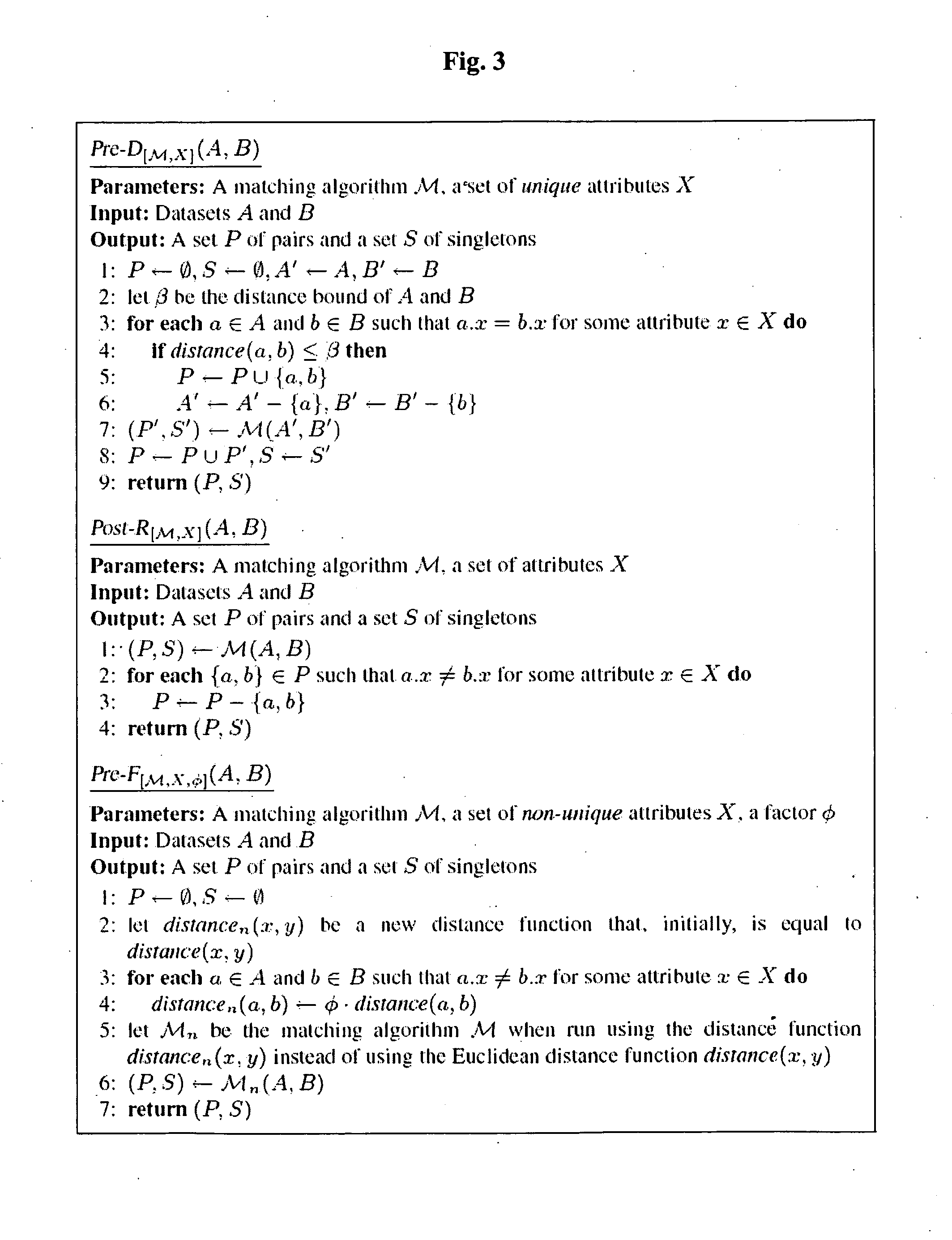Integrating data from maps on the world-wide web
a data and map technology, applied in the field of data integration, can solve the problems of inability to integrate data from maps on the web, inability to use properties, and inability to use data on the web correctly or inaccurately, and achieve the effect of increasing the effectiveness of location-based matching algorithms
- Summary
- Abstract
- Description
- Claims
- Application Information
AI Technical Summary
Benefits of technology
Problems solved by technology
Method used
Image
Examples
Embodiment Construction
[0024]In the following detailed description of various embodiments, reference is made to the accompanying drawings that form a part thereof, and in which are shown by way of illustration specific embodiments in which the invention may be practiced. It is understood that other embodiments may be utilized and structural changes may be made without departing from the scope of the present invention.
[0025]Because data on the Web can be heterogeneous, can change quickly and can be incorrect or inaccurate as described above, the present invention focuses on techniques that start with location-based matching algorithms and improve them. Relying primarily on locations has the following three advantages. First, locations are always available for spatial objects and their degree of accuracy can be determined relatively easily. Hence, location-based matching algorithms can be applied to objects from any pair of maps. Second, location-based methods are suitable for integration of heterogeneous d...
PUM
 Login to View More
Login to View More Abstract
Description
Claims
Application Information
 Login to View More
Login to View More - R&D
- Intellectual Property
- Life Sciences
- Materials
- Tech Scout
- Unparalleled Data Quality
- Higher Quality Content
- 60% Fewer Hallucinations
Browse by: Latest US Patents, China's latest patents, Technical Efficacy Thesaurus, Application Domain, Technology Topic, Popular Technical Reports.
© 2025 PatSnap. All rights reserved.Legal|Privacy policy|Modern Slavery Act Transparency Statement|Sitemap|About US| Contact US: help@patsnap.com



